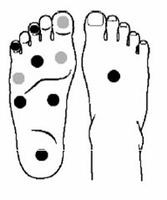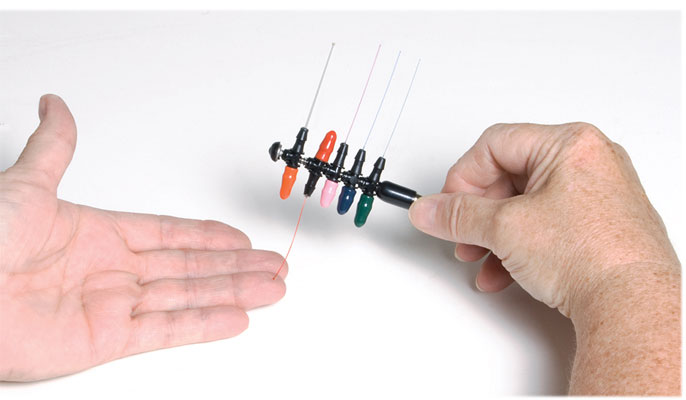 20th Nov 2014
20th Nov 2014
Using Monofilaments in Sensory Assessment Examinations for Diabetes
Sensory assessment examinations are performed using a 5.07 Semmes-Weinstein monofilament. Traditionally the monofilament is composed of a nylon filament fixed to a plastic handle. Using the Semmes-Weinstein monofilament the practitioner will press the nylon filament against a designated pressure point on the patient's foot until it bends for 1 second. The administrator will record the patient's response and move on to the next area of the foot. There are 10 different areas of the foot that should be tested on both of the patient's feet. For a step by step walk-through of a Sensory Assessment please see below.
Step by Step Monofilament Evaluation for Diabetes
Monofilament Foot Test for Diabetes
1. First off, ask your patient to close their eyes and tell them to let you know when they feel the monofilament pressing against their foot. It is important to the accuracy of the test that the patient cannot see the test being performed because it can create a false positive.

2. Place the monofilament on 1 of the testing sites on the foot outlined in the chart. You will be testing each of the 10 designated sites on each foot.
3. Press firmly so that the filament bends and hold it there for 1 to 2 seconds. Make sure you leave the monofilament flexed for over 1 second for best results.
4. Repeat steps 2 and 3 for each of the 10 testing sites on each foot and record your results.
Identifying Loss of Protective Sensation (LOPS) Using Sensory Assessment Monofilament Testing
Failure to feel the filament at 4 of 10 sites is 83% specific for determining Loss of Protective Sensation. The definition of "Loss of Protective Sensation" means the patient cannot feel the 10 gram monofilament and they are at risk for injuries and ulcers commonly created by the use of shoes and/or objects stepped on without shoes.
Treatments for LOPS include Adaptive shoes and patient education which are both critical to prevent chronic injuries, infections, and possible amputations. The screening of the foot with Semmes-Weinstein monofilaments has been credited with reducing the number of amputation in diabetic and Hansen's disease patients.
Looking for monofilament tests
used for evaluating diabetes and other conditions as described in this article?






